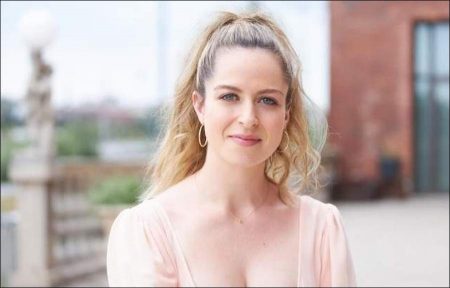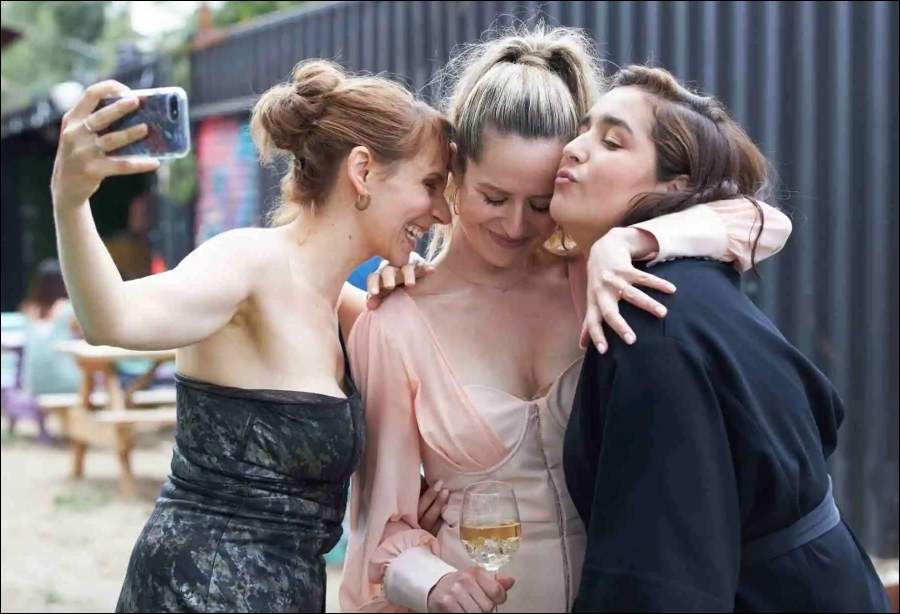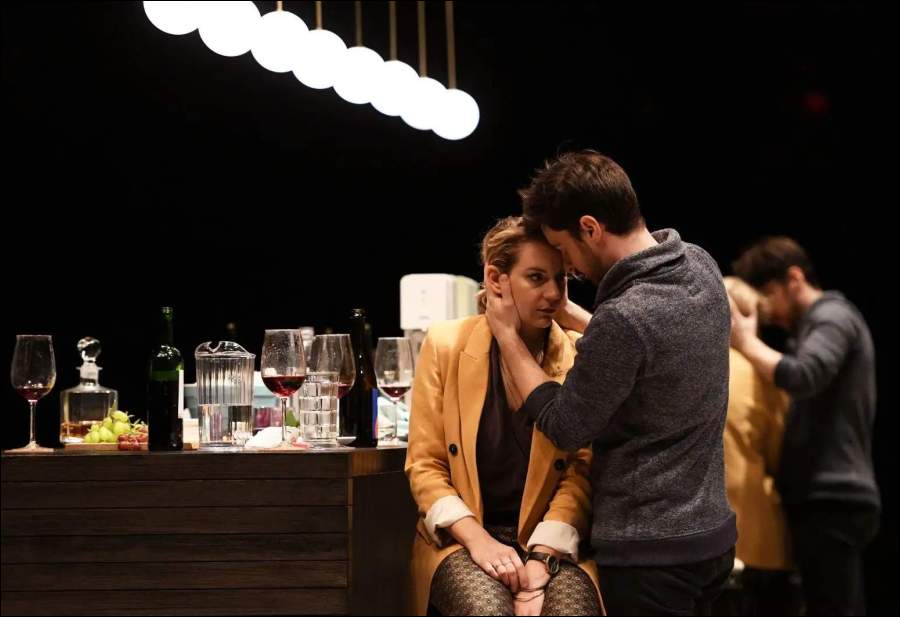Lignes de Fuite movie storyline. A dramatic comedy that invites us to an eventful reunion between three high school friends. After a festive and drunken start to the evening, the trio of thirty-year-olds loosens up: old tensions rebound, discussions escalate and revelations follow one another – the whole thing forms an increasingly explosive cocktail that will put their friendship to the test. . Can yesterday’s best friends still be today?
Lignes de fuite (English: Lines of Escape) is a Canadian comedy-drama film, directed by Miryam Bouchard and Catherine Chabot and released in 2022. Adapted from Chabot’s stage play, the film centres on Audrey (Catherine Chabot), Valérie (Léane Labrèche-Dor) and Sabina (Mariana Mazza), three high school friends who are having a reunion party at age 30, only to find their bond tested by the ways in which they have grown apart, becoming radically different from each other in their lives and values, in adulthood.
The cast also includes Maxime de Cotret as Audrey’s boyfriend Jonathan, Mickaël Gouin as Valérie’s boyfriend Paul-Émile and Victoria Diamond as Sabina’s girlfriend Amber, as well as Antoine Vézina, Marc Auger-Gosselin, Thierry Bellevue, Stéphanie Bélanger, David Cloutier, David Corriveau, Robert Di Loreto, Isabel Dos Santos, Hugo Giroux and Nora Guerch in supporting roles.
The film opened in theatres on July 6, 2022. It was the last film ever theatrically distributed by Les Films Séville before its shutdown. Jean-François (Jafaz) Ferland, Marie-Claude Lafontaine and Charles Lamoureux received a Canadian Screen Award nomination for Best Visual Effects at the 11th Canadian Screen Awards in 2023.

Film Review for Lignes de Fuite
“No one gives a fuck about Québec”, one of the last lines of Victoria Diamond’s character summons the whole feeling of this incredible play-turned-into-a-film directed by the author herself, Catherine Chabot, alongside Myriam Bouchard. As vibrant and cosmopolitan as Montréal can be, the feeling of being apart from the rest of Canada rests in the roots of the city, which lies in the welcoming embrace of its people, mainly composed of immigrants, but still with the provincial charm of Québec.
As holders of the French language, the Québecois people have been struggling politically with a lot of measures, internally and externally of the province. By protecting la langue mère, they welcome francophone Europeans who left and right make gentrification a huge issue in neighborhoods once occupied by the working class, and that now, can’t even buy a house or an apartment solo. At the same time, conservative politicians who problematize the use of English as a communication form create an internal “boiling pan” sensation in Canadian migrants from English-speaking provinces, who generally understand this measure as “racist”.
In addition to that, the anti-immigrant upheave born in the words of right-wing big trolls such as Donald Trump, creates an even more unease feeling, that demonizes the very would-be helpers for the Québecois economic situation, that now encounters itself in a tsunami of “Nous embauchons” signs in business doors and windows throughout the whole province. Protectionist politics preached by America’s biggest orange buffoon inflames the working-class population who fight against a decreasing economy that looks directly to a social security crisis in the next decades. And “Lignes de Fuite” seems to nail that very feeling on every character on-screen, from the 3 protagonists to each of their counterparts.
Representing the average North American bored by middle-class security but uneasy about their purpose in life and society, we have Chabot’s character Audrey. The fierce-yet-hypocrite pseudo-leftist who advocates for social justice but lacks a wider view of her bourgeoise privileges we have Léane Labrèche-Dor’s Valérie. And finally, closing the three musketeers, we have Mariana Mazza’s Sabina, a second-generation immigrant Québecois who represents at the same time the success low-key feared by reactionary nationalists, and the faux-woke elite, which on one hand support progressive politics, but with the other finances predatory companies that swallow the working-class in a blood bath of endless debts and loans to live the capitalist dream.
Line of Escape (or Ligne de Fuite) is a concept featured in the two-volume theoretical work “Capitalism and Schizophrenia” by the French authors Gilles Deleuze and Félix Guattari. A line of escape (or “of flight”) is an assemblage, which according to posthumanist philosophy is a collection of things that have been gathered together or assembled, that allows change and adaptation to changes, associated with psychological, sociological, and political factors. In the book “A Thousand Plateaus – Vol. 2 of Capitalism and Schizophrenia”, the authors describe that: “Multiplicities are defined by the outside: by the abstract line, the line of escape, according to which they change in nature and connect with other multiplicities. (….)
The line of escape marks: the reality of a finite number of dimensions that the multiplicity effectively fills; the impossibility of a supplementary dimension, unless the multiplicity is transformed by the line of escape; the possibility and necessity of flattening all of the multiplicities on a single plane of consistency or exteriority, regardless of their number of dimensions”. This means that a “line of escape”, or deterritorialization, is a process by which a social relation, called a territory, has its current organization and context altered, mutated or destroyed, and knowing this concept we can understand even better the relation and downfall of Audrey, Valérie & Sabina’s friendship.
The three BFFs get caught in a day that, from their first meeting onwards, goes downhill in a dramatic and intense dispute of masks being taken off. The caring and bubbly husband turns out to be a reactionary traditionalist, the easy-going intellectual boyfriend turns out an insensitive close-minded nihilist, and the artsy feminist girlfriend shows her true English-colonialist view towards the Belle Province’s people. The ice storm, or symbolist turmoil, just closes the big encounter between the six into a chaotic mess, in which hypocrisies is the main drive that leads them all to a sunken place of self-centered issues while reflecting the Québecois society’s biggest problems and fears.
The incredibly smart, funny, and dramatic screenplay written by Chabot and Émile Gaudreault showcases the awareness experienced by Québec people. The problems are not at all only rooted in the Boomers x Millenials generational dispute, instead, it deals with way deeper racines discussed by thinkers like Marx, Freire, Proudhon, MLK, and many others that see the main problem as it is: capital-labor conflict. Obviously, this class clash increases when it adds up racial and gender matters, especially when we realize the very bottom of this social pyramid is composed of non-white working-class females who face racism, elitism, and sexism all at once; but in “Lignes de Fuite” we can sense it throughout the diegetic day that the narrative takes place.
Even though my main focus with this text isn’t to talk about that, I have to mention the lack of diversity in the cast, which has only one non-white character: Sabina, the Latina queer body-positive person who embodies the most minorities possible in herself but do it aware of the weight she carries on her shoulders. The anger burst of her character in the third act is breathtaking in an incredible performance by Mazza, especially with her subtle hints of discomfort throughout the narrative. We can see the crescendo of tension she experiences with the little clashes here and there with her friends and their respective partners. However, being the only character that is not Caucasian, Sabina brings the strengths and pains of immigrants in her voice, tears, and success.
Despite being based on a play, “Lignes de Fuite” successfully translates its source material to the 7th Art, unlike some other works based on playwrights’ œuvres. Every line, every action, and interaction between the characters and the environments they are in are delightful. The cinematography and editing are well-worked by the film’s crew, crowning the début feature film of Catherine Chabot with brilliancy and praise. Chabot’s and Bouchard’s work as directors brings the audience to a rollercoaster of emotions and reflections alongside the characters, from laughter to anguish, from anger to tears.
Even if the québecois dilemma is far from being solved, just like in the final scenes of the movie, the story successfully brings upfront the themes that must be thought, reflected, and digested individually and collectively, as grudges and hypocrisies are ripped off leaving the social-problems of La Belle Province’s children exposed, like wounds that must be treated to be cured, even if the necessary medicine stingy hurts or tastes horribly bitter when swallowing it.
Lignes de Fuite (2022)
Directed by: Miryam Bouchard, Catherine Chabot
Starring: Catherine Chabot, David Cloutier, Maxime de Cotret, Victoria Diamond, Mickaël Gouin, Léane Labrèche-Dor, Mariana Mazza
Screenplay by: Catherine Chabot, Émile Gaudreault
Production Design by: Guy Langlois
Cinematography by: Stéphanie Anne, Weber Biron
Film Editing by: Arthur Tarnowski
Art Direction by: Guillaume Couture
Makeup Department: Virginie Boudreau
MPAA Rating: None.
Distributed by: Les Films Seville (Canada)
Release Date: July 8, 2022
Views: 92











